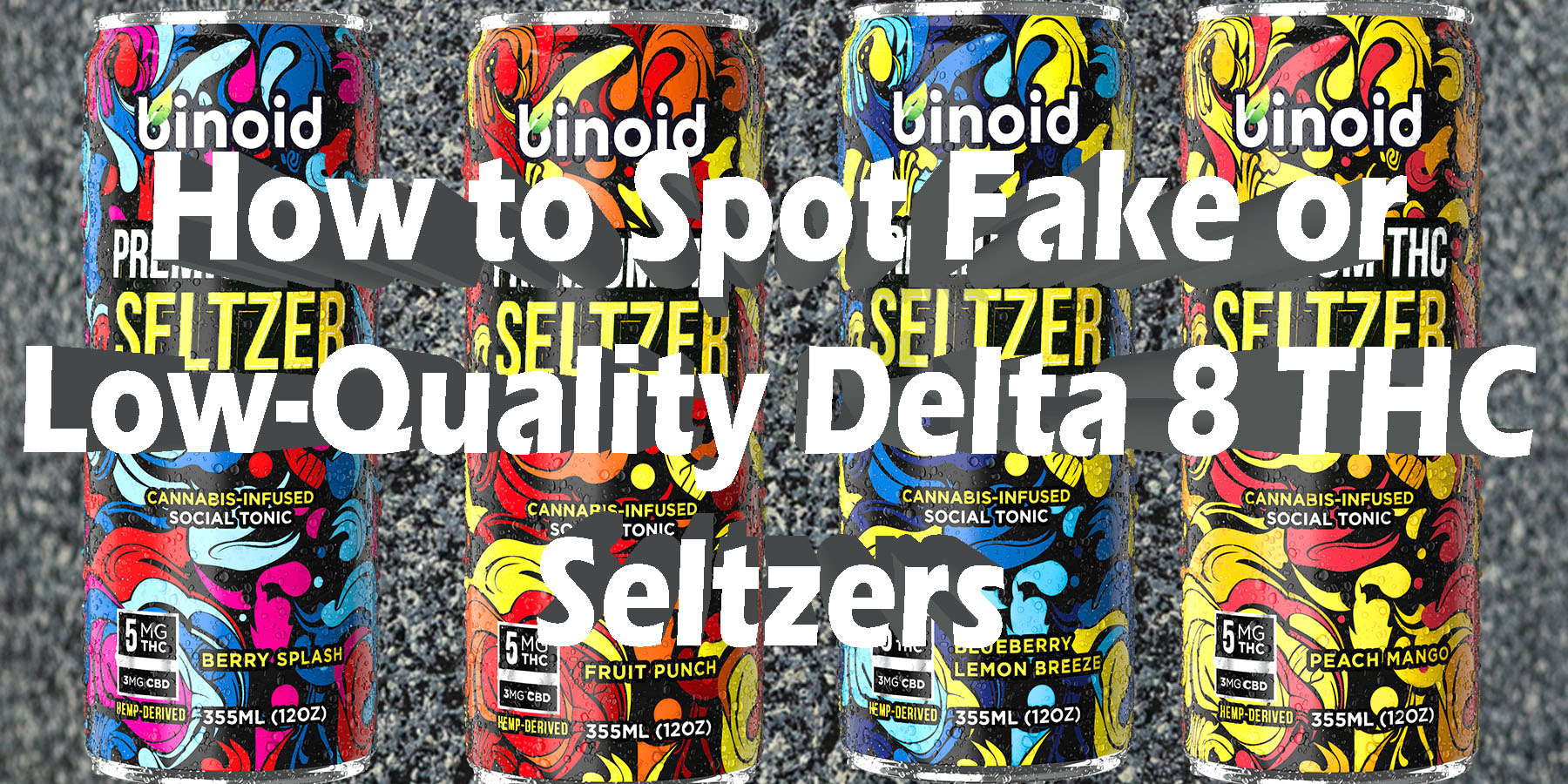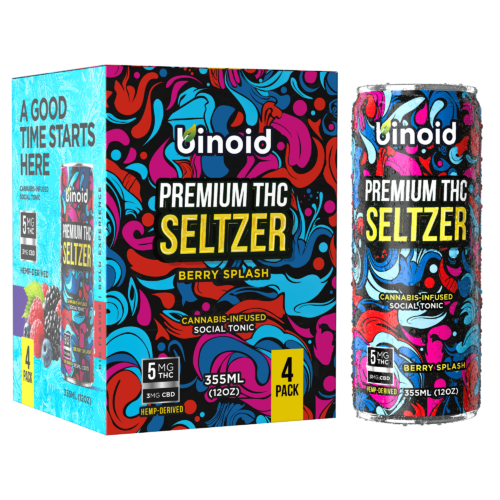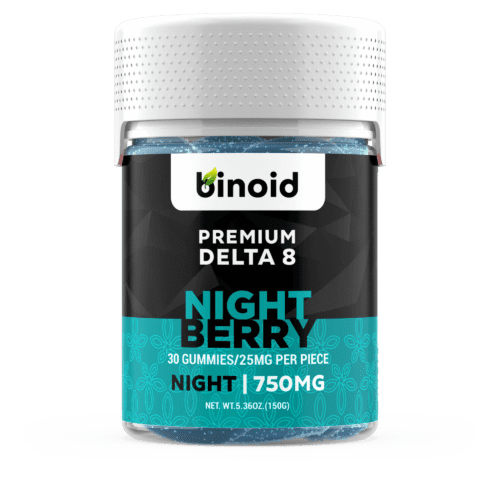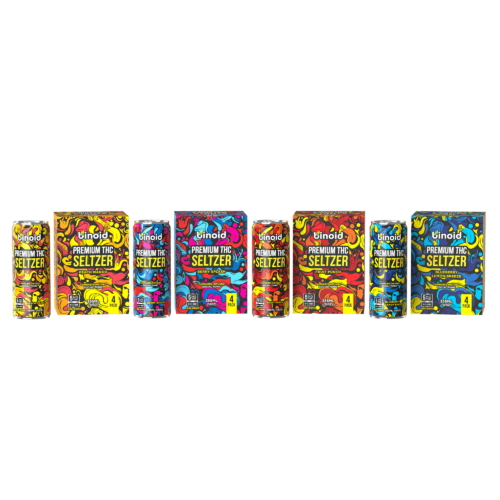The unmistakable crack of a can opening, the lively dance of bubbles ascending in a glass, and the promise of a clear-headed, functional buzz—Delta 8 THC seltzers have galloped onto the scene, carving out a new frontier in the world of recreational beverages. In an astonishingly short time, they have transformed from a niche curiosity into a significant outpost in modern cannabis culture, offering a uniquely accessible alternative to alcohol and traditional, more potent cannabis products.
This rapid expansion has attracted a wagon train of skilled artisans dedicated to perfecting the infused beverage. However, this booming, unregulated territory has also attracted its share of outlaws and snake-oil salesmen, creating a marketplace where fool’s gold is often peddled right alongside the real thing. Learning to distinguish a premium, safely crafted seltzer from a disappointing dud or a downright dangerous fake is the most vital skill for any modern prospector looking to safely stake their claim in this exciting new world.
To Buy Delta 8 THC Seltzers Click Here
Recommended products
What Exactly are Delta 8 THC Seltzers Anyways?
At their core, Delta 8 THC seltzers are sparkling water beverages that have been infused with a carefully measured dose of Delta 8 Tetrahydrocannabinol – a cannabinoid found in the cannabis plant that is chemically similar to the more famous Delta 9 THC but is known for producing a milder, more clear-headed psychoactive effect. These drinks are sold in pre-packaged cans, offering an exceptionally convenient, discreet, and socially familiar way to consume cannabinoids. The Delta 8 itself interacts with the body’s endocannabinoid system (ECS), a complex internal signaling network that helps to regulate a host of physiological functions, including mood, pain sensation, and appetite.
When you drink a Delta 8 seltzer, the cannabinoid is absorbed through the digestive tract, resulting in a more gradual onset of effects compared to inhalation, which adds a layer of predictability and control to the experience. The feeling produced by Delta 8 seltzers is frequently described as a smooth, manageable wave of uplifting calm and gentle euphoria. In contrast to the sometimes jarring intensity that can accompany other consumption methods, the experience with a seltzer tends to build slowly and gracefully, typically taking anywhere from 30 to 90 minutes to reach its full expression.
This measured onset provides a reassuring sense of control, permitting users to ease into a relaxed and functional state of mind without feeling overwhelmed. Many people report feeling more present, focused, and socially at ease, often experiencing a subtle enhancement of their surroundings. The goal for most is not a powerful, disorienting high, but a lucid enhancement of their current reality, fostering a disposition of lighthearted bliss that is perfectly suited for a wide array of social and solitary activities.
The audience for Delta 8 THC seltzers is incredibly diverse and expanding rapidly, covering a wide demographic of adults who are exploring new options for their recreational time. They are especially popular among individuals who are “canna-curious” but might feel intimidated by the prospect of smoking, vaping, or dealing with the potent and often unpredictable nature of traditional edibles. The familiar ritual of drinking a canned beverage significantly lowers the barrier to entry.
Furthermore, health-conscious consumers are flocking to them, drawn in by the fact that they are typically low in sugar and calories, presenting an appealing way to unwind that avoids the negative health implications often tied to alcohol consumption. Whether for the person seeking a social lubricant, the artist looking for a spark of inspiration, or the individual desiring a peaceful end to a long day, Delta 8 seltzers offer a versatile and thoroughly modern path to adult enjoyment.
The Seltzer Spectrum: From Premium to Problematic
To become a savvy prospector on the Delta 8 frontier, you must first understand that the landscape of risk here is fundamentally different from the regulated Delta 9 market. The critical distinction is not between a disappointing legal product and an illegal fake one; rather, it’s about understanding the chemical realities of how Delta 8 is made. Nearly all Delta 8 THC on the market is created by chemically converting hemp-derived CBD through a process called isomerization.
The quality and safety of the final product depend entirely on how well this complex chemical reaction and the subsequent purification are performed. Therefore, the spectrum of risk for Delta 8 is not about “fake vs. low-quality” but about “Clean, Verified Distillate vs. a Contaminated Chemical Soup”. The most blatant danger comes from products that are unquestionably illicit and unsafe, operating with zero transparency. These are the seltzers you find at gas stations or from anonymous online sellers, often distinguished by their use of cartoon characters or other copyright-infringing branding.
The primary risk with these products isn’t just inaccurate dosing; it’s that you have no idea what psychoactive compound is actually creating the effect. These operations often use a cheap, crude, and improperly neutralized “Delta 8 distillate” that is rife with unknown cannabinoid isomers, unreacted acidic reagents, and cleaning solvents. In some cases, they may even contain dangerous synthetic cannabinoids to mimic a high, while containing little to no actual Delta 8 THC at all. These products are not just “low-quality”; they are a direct and serious gamble with your health.
A more insidious risk, however, comes from Delta 8 seltzers that appear legitimate, sold by online brands with professional websites, but are still fundamentally low-quality due to an impure extract. These companies cut corners on the most expensive parts of production: the complex chromatography and distillation required to clean up the crude extract after the isomerization reaction.
This “low-quality” distillate might be free of cartoon characters, but it still contains a host of problematic chemical artifacts. This can include illegally high levels of Delta 9 THC, significant amounts of unidentified cannabinoid byproducts, and residual acids or solvents that were never properly removed. This is the hidden danger in the Delta 8 market: a product that looks professional but was made with unpurified extract, making it functionally as dangerous as the most obvious fakes.
The tangible result of using this unrefined extract is a beverage that is unpleasant at best. The harsh, almost metallic or acidic bitterness that defines a bad Delta 8 seltzer is not the typical “weedy” flavor of cannabis; it is the taste of chemical residue. The inconsistent and sometimes unexpectedly potent or anxious effects can be a result of the unknown cocktail of various cannabinoid isomers created during the reaction. When a brand skips the rigorous, multi-stage purification and the full-panel lab testing needed to verify it, they are bottling a scientific failure. Consuming it is not just a waste of money; it’s an act of trusting that an operator who cut corners on chemistry didn’t also compromise your safety.
Recommended products
Why the Bad Bubbles Exist and The Motive Behind Poor Quality
Understanding the motivations behind the creation of these problematic seltzers is the key to appreciating why consumer vigilance is so critically important. The existence of these subpar products is not an accident or an oversight; it is a calculated business strategy driven by the powerful allure of high profits in a largely unregulated space. The number one motivator is, of course, money. Producing a legitimate, high-quality Delta 8 seltzer is a capital-intensive process. It demands premium, purified Delta 8 distillate, sophisticated and expensive Nanoemulsion equipment, high-grade natural flavors, and—most importantly—a consistent and rigorous regimen of full-panel, third-party lab testing.
Illicit and low-grade producers brazenly bypass every single one of these essential quality checkpoints. They start with cheap, crude Delta 8 extract, which often carries a harsh, bitter flavor and may contain residual chemicals from the conversion process. They then try to cover up this unpleasant taste with an overwhelming amount of cheap, artificial sweeteners. Most critically, they completely sidestep the expensive and time-consuming process of lab testing, which can cost hundreds or even thousands of dollars for each batch. This allows them to pocket enormous savings while offloading 100% of the potential health risk directly onto the consumer.
By operating on the fringes of the market, they also evade the taxes and licensing fees that legitimate operators are subject to, enabling them to sell their products at prices that seem appealingly low but come with a hidden, heavy cost.
The Label as Your Ledger: Decoding the Can
The most powerful prospecting tool you have is the information presented—or conspicuously absent—on the seltzer’s packaging. A reputable brand, proud of its product’s quality and safety, will provide you with all the data you need to feel secure in your purchase. A shady operator, by contrast, will hide behind loud designs, vague language, and misleading promises.
The QR Code: Your Non-Negotiable Key to Confidence
In the modern cannabis and hemp marketplace, the single, undisputed symbol of a product’s legitimacy is a scannable QR code on the can or packaging. This code must link directly to a product-specific Certificate of Analysis (CoA), also known as a lab report, from an accredited, independent, third-party laboratory. If a Delta 8 THC seltzer does not have a functional QR code that leads directly to a verifiable CoA, it is an immediate and disqualifying red flag. Do not buy it. This code is the brand’s transparent pledge of quality and your ultimate key to peace of mind.
Once you have scanned the code and pulled up the CoA, you are looking for a few key pieces of intelligence. This document, your “assayer’s report,” might seem intimidating, but you can quickly get the information you need by focusing on these sections:
Potency Analysis: This is where you confirm that the product’s dosage is accurate and legally compliant. The report must show the exact concentration of Delta 8 THC, which should closely match the amount advertised on the can. Crucially, you must also check the Delta 9 THC level. To be federally legal, it must be at or below 0.3%. If this value is higher, or not listed at all, the product is illegal.
Pesticide Screening: Hemp is a bioaccumulator, meaning it can draw chemicals from its environment. A full-panel CoA will show a clear “Pass” for a long list of pesticides, ensuring the agricultural practices were clean. The best results will be listed as “ND” (None Detected) or “<LOQ” (Below Limit of Quantitation).
Heavy Metals and Contaminants: The report absolutely must show a “Pass” for heavy metals like lead, arsenic, and mercury. It must also confirm the absence of microbial contaminants like mold, yeast, and salmonella, as well as residual solvents from the production process. For Delta 8, this last test is critical to ensure no harmful chemicals are left over from the conversion of CBD.
Recommended products
Visual Red Flags on the Label
Beyond the essential QR code, the design and text on the can itself can serve as valuable clues about the product’s trustworthiness:
Copyright Infringement: This is the most blatant and obvious sign of a counterfeit, illicit product. If the seltzer’s branding uses logos, characters, names, or fonts from famous mainstream brands—such as a cannabis-themed version of a popular soda or candy—it is an illegal product and should be avoided at all costs. Legitimate companies invest in creating their own unique and professional brand identities.
Outlandish Dosage Claims: The legitimate Delta 8 seltzer market typically offers doses that range from 5mg to 25mg, and rarely up to 50mg, per serving. If you encounter a can that’s claiming to contain 500mg, 1000mg, or more, it is almost certainly a fake product from the illicit market. These astronomical numbers are a deceptive marketing gimmick designed to prey on inexperienced users by making them think they are getting an incredibly potent product for a low price.
Typos and Poor-Quality Printing: A legitimate brand takes pride in its appearance and invests in professional graphic design and high-quality printing. A label that is riddled with spelling mistakes, awkward grammatical errors, blurry or pixelated images, or faded, low-resolution colors is a clear indicator of an unprofessional, untrustworthy, and likely unsafe operation.
The Brand Behind the Bubbles: Vetting the Company
In this new frontier, a company’s reputation is its most valuable asset. A few minutes of digital prospecting before you make a purchase can save you from a great deal of disappointment and potential risk. Start your investigation with a simple online search of the brand’s name. A trustworthy company will have a polished, professional website that provides clear, detailed information about their products, their manufacturing standards, their company mission, and easily accessible contact details. Their social media presence should be active, professional, and engaging. If a brand has a broken, amateurish, or nonexistent online footprint, it is a valid reason to be highly skeptical.
Next, it is wise to seek out independent, third-party reviews. While a brand’s own website will invariably showcase a curated selection of five-star testimonials, you can find more balanced and honest feedback on community forums like Reddit. Search for the brand’s name in subreddits like Delta 8 to see what real, unbiased users are saying about the seltzer’s flavor, texture, effects, and overall quality. This is where you will find the unvarnished truth from fellow consumers.
Finally, and most importantly, whenever possible, purchase Delta 8 THC seltzers from a state-licensed, legal cannabis dispensary if you live in a region where that is an option. This is the undisputed golden rule for ensuring safety. Licensed retailers are legally mandated to sell only products that have been rigorously tested and verified by state-approved labs. If you are purchasing seltzers from a gas station, a convenience store, a flea market, or an unlicensed “gift shop,” you are knowingly engaging with the illicit market, where absolutely none of the guarantees of quality, consistency, or safety apply.
Recommended products
A Sensory Inspection – Trusting Your Eyes, Nose, and Palate
Once you have vetted the label, researched the brand, and have the can in your hand, your own senses are the final line of defense. A high-quality Delta 8 seltzer is an artisanal beverage, and it should appeal to you from the very moment you pour it into a glass.
The Look: Clarity and Consistency
Pour the seltzer into a clear glass to give it a proper visual inspection. A well-made Delta 8 seltzer should be crystal clear. Some varieties with natural fruit purees may have a consistent, even haze, but there should be a vibrancy to the carbonation, with a steady stream of fine, lively bubbles. Red flags to look for include:
Sediment or Floaters: There should never be visible chunks, particles, or a layer of sediment settled at the bottom of the glass. This is a clear sign of a poor filtration process or an unstable product where ingredients have fallen out of solution.
Oily Sheen: Look very closely at the surface of the liquid in the glass. If you can see a rainbow-like oily film or distinct oil droplets floating on top, it is a definitive sign of a failed or broken Nanoemulsion. This means the Delta 8 oil has separated from the water, which will lead to an unpleasant, greasy texture and wildly inconsistent dosing.
Unnatural Colors: Premium seltzers almost always use natural flavorings and, as a result, have a very light, natural-looking tint or are completely clear. A seltzer with a bright, neon, or otherwise unnaturally vibrant color is a strong indication that cheap, artificial coloring has been used.
The Smell: Clean and Inviting
Bring the glass to your nose and give the seltzer a gentle sniff. The aroma should be clean, fresh, and appealingly representative of its advertised flavor. You should be able to clearly smell notes of crisp lime, ripe mango, or fresh berry. While some cannabis connoisseurs enjoy the plant’s natural aroma, a premium seltzer should have very little to no “weedy”, “grassy”, “earthy”, or “swampy” smell. A strong and unpleasant cannabis odor is often a sign that a crude, unrefined, and poorly purified extract was used instead of a clean, high-grade distillate.
The Taste and Texture: The Ultimate Test
The final and most definitive test is the taste. A premium Delta 8 seltzer should be a genuine pleasure to drink. The mouthfeel should be crisp, clean, and light, not heavy, thick, or syrupy. The flavor should be balanced and refreshing, allowing the natural fruit or botanical notes to take center stage. Key warning signs that you are dealing with a low-quality seltzer include:
A Bitter or Chemical Aftertaste: This is the most common and telling flaw. After you swallow, the seltzer should not leave a harsh, lingering, bitter, or chemical-like flavor on your palate. This unpleasant aftertaste is the unmistakable signature of a low-grade Delta 8 extract that has not been properly purified or remediated.
Oily or Greasy Mouthfeel: The seltzer should feel clean and crisp in your mouth, like high-quality sparkling water. If it leaves a slick, greasy film on your tongue or the roof of your mouth, it confirms that the Nanoemulsion is of poor quality and the oil has not been properly integrated.
Overwhelming Sweetness: While some seltzers are lightly sweetened to balance the flavor, an excessive, cloying, or syrupy sweetness is almost always used as a blunt instrument to try and mask the foul taste of a cheap and bitter extract. A quality seltzer should be refreshing, not taste like a sugary soda.
Your Consumer Power is What Fosters a Market of THC Drink Quality
Learning to navigate the new frontier of Delta 8 THC seltzers is about more than just dodging a bad product; it’s about taking an active role in building a better, safer, and more transparent market. Every single time you take a moment to scrutinize a label, verify a Certificate of Analysis, and choose to give your business to a reputable, transparent source, you’re casting a powerful vote for quality.
This collective consumer diligence is what rewards the passionate artisans who are dedicated to their craft. It builds a culture of accountability that marginalizes the grifters and bad actors who seek to profit from deception and risk. Your informed choice is the most powerful force shaping the future of this exciting beverage category, ensuring it remains sparkling, safe, and truly exceptional for all who wish to explore it.







